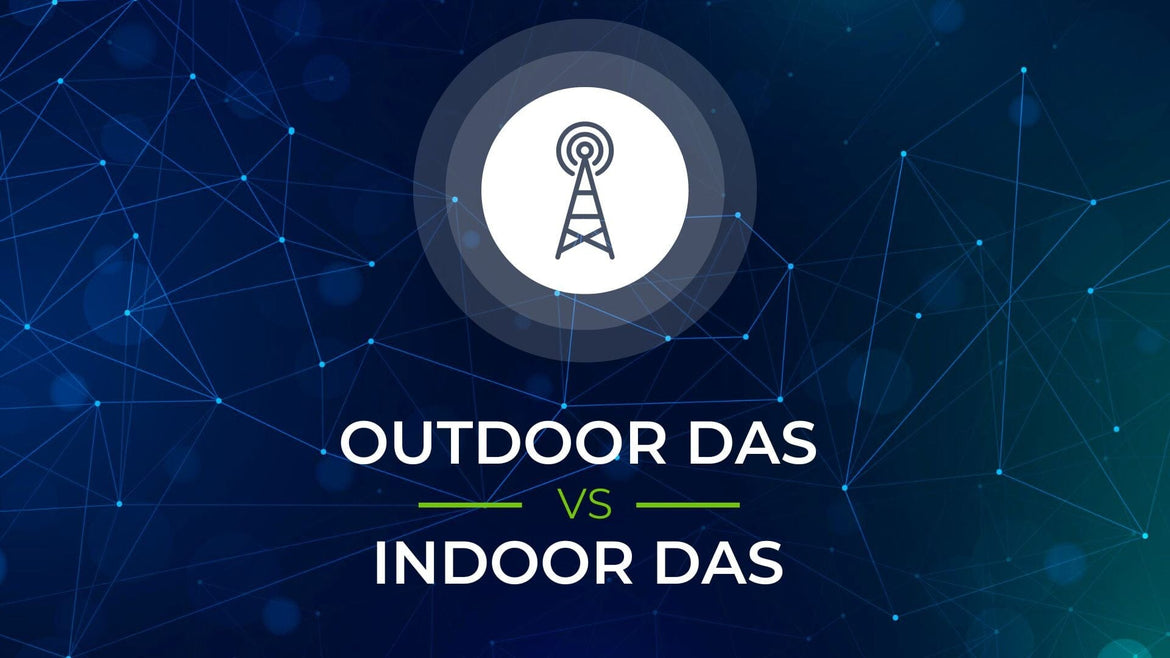
Outdoor DAS (oDAS) vs Indoor DAS (iDAS)
- News
- 16 Mar, 2023
If you're familiar with cell phone signal boosters, you probably know that they are only effective for indoor use. However, if you need reliable cell signal coverage for a large outdoor area, your best option is to install an Outdoor DAS (oDAS).
A Distributed Antenna System (DAS) is a network of antenna nodes that are spatially separated but connected to a common source. This system uses a transport medium, typically a fibre cable, to provide wireless service within a designated geographic area or structure. In simple terms, it's a way of ensuring that a fixed area has dependable radio or cellular signal coverage without requiring a dedicated cell tower.
If you're considering having a DAS installed on your property, whether it's an oDAS or an iDAS, don't hesitate to reach out to us. We offer nationwide DAS installation services and have assisted many businesses like yours in permanently resolving their cellular signal issues.
In this blog, we will concentrate on two primary types of DAS, namely Outdoor DAS (oDAS) and Indoor DAS (iDAS), which are utilised for various use cases.

The Functioning of a DAS: An Overview
A DAS comprises two fundamental components:
-
Signal Source: A DAS cannot generate signals on its own. Instead, it receives signals via one of three methods: over-the-air from a cellular tower, via an on-site base transmission station, or through small cells.
-
Distribution System: The 5G or 4G LTE signal needs to be distributed throughout the designated area. This can be accomplished using one of four primary methods. Active DAS uses direct cabling, Passive DAS uses antenna networks within a building, Hybrid DAS combines both methods, while Digital DAS employs cutting-edge technology (more on this later).
While we have already discussed Outdoor DAS (oDAS), Indoor DAS (iDAS) is more commonly used.
Outdoor DAS (oDAS)
Advantages
Outdoor DAS is an effective solution for providing reliable cell coverage in high-density outdoor venues such as open-roofed stadiums, parks, universities, resorts, and courtyards. By eliminating dropped calls and improving reception, it can enhance the quality of life and enable quicker emergency response times.
oDAS can provide coverage for 5G and 4G LTE across all cellular bands and networks. For a reliable outdoor DAS, approval from network providers is required to avoid potential complications within the overall cellular network.
Additionally, oDAS can be implemented across Public Safety and ERRCS bands. Many base stations can handle multiple bands simultaneously, ensuring complete coverage for a designated area.
Costs and Technology
In the past, deploying an oDAS was expensive and time-consuming, but new technologies like Digital DAS have made it more feasible and affordable.
Typically, oDAS uses remote radio heads (RRHs) connected to a large base station via fibre cable. RRH nodes generate a considerable amount of power ranging from 1 to 20 watts of RF output and are housed in weatherproof outdoor enclosures. If multiple networks need to be covered, multiple base stations may be required.
With Digital DAS technology, oDAS deployment is more practical and cost-effective as headend equipment is no longer needed. Remote units can be connected directly to the base station.
However, deploying oDAS can still be time-consuming and challenging compared to iDAS. Approval from network providers is required for any Active DAS system, and materials used in Outdoor DAS are generally more expensive than those used in Indoor DAS.
Indoor DAS (iDAS)
Indoor DAS (iDAS) is the most widely used type of DAS deployment for several reasons. Firstly, it is typically less expensive than outdoor DAS, with Passive and Hybrid options coming in at significantly lower costs than Active DAS. Secondly, buildings tend to have worse cell signal than outdoor areas due to building materials impeding cell reception, making it more likely for building owners to opt for an iDAS deployment.
Depending on the building's size and the type of deployment, engineers will divide the coverage area needs into sectors. Accurate propagation maps are created using iBwave system design services by overlaying proposed equipment over existing floor plans. This allows for precise placement of remote units (RUs), which are typically dome or panel antennas.
Bolton Technical South Africa offers turnkey Passive iDAS deployment options.

Differences Between Outdoor and Indoor DAS
One of the primary differences between Outdoor and Indoor DAS is the type of technology used. In general, Indoor DAS is more cost-effective and easier to deploy. It has more deployment options, including both Active and Passive systems that can be used in most indoor settings.
On the other hand, Outdoor DAS typically requires the use of remote radio heads (RRHs), which use higher power than the remote units (RUs) used in Indoor DAS. However, in many cases, Outdoor DAS is the best option for providing cell coverage in outdoor settings like parks, stadiums, and campuses. The only other option for outdoor coverage is a cell tower macrocell, which is entirely at the discretion of the network provider and can struggle to handle large numbers of people at once.
How May We Help You?
Bolton Technical is a leading provider of cell phone signal boosters, devices that amplify 4G & 3G LTE for any phone with any carrier for home, office, or car. We’ve boosted over 1,000,000 m² of signal for homes, buildings, and vehicles across America and Canada and now that same power is boosting signal across South Africa.
- Free consultation (ask us anything) with our South African-based customer support. Email us or Call us today.
- Free shipping over R500 to Major South African cities. Usually ships same day.
- 30-day money back guarantee. You want to make sure you're satisfied.
Our goal is simple: keep people connected. Ask us anything and we'll be glad to help.



